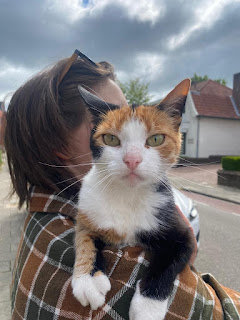Can we Create a Bikeable America?
When I signed up to go on this trip I had a feeling that it would be one of the most exciting things I have ever done, but I had no way of knowing that it would make me feel like my life has been changed for the better in so many ways. Every day I find myself thinking and saying that I can't believe that this trip is actually school but at the same time, I truly feel like I am learning an immense amount, no matter what I am doing. Simply being in urban environments like Copenhagen and Odense has opened my eyes to what could be possible to achieve in American cities. When we were in Denmark we met with Andreas Rohl who was the director of the bike program in Copenhagen from 2007 to 2015 and what he said totally changed my perspective on what it might be possible to do with bikes in America. When I first got to Copenhagen it was easy to assume that the city had always been a bike-centered society and so it would be nearly impossible to replicate anything of the like back home....




